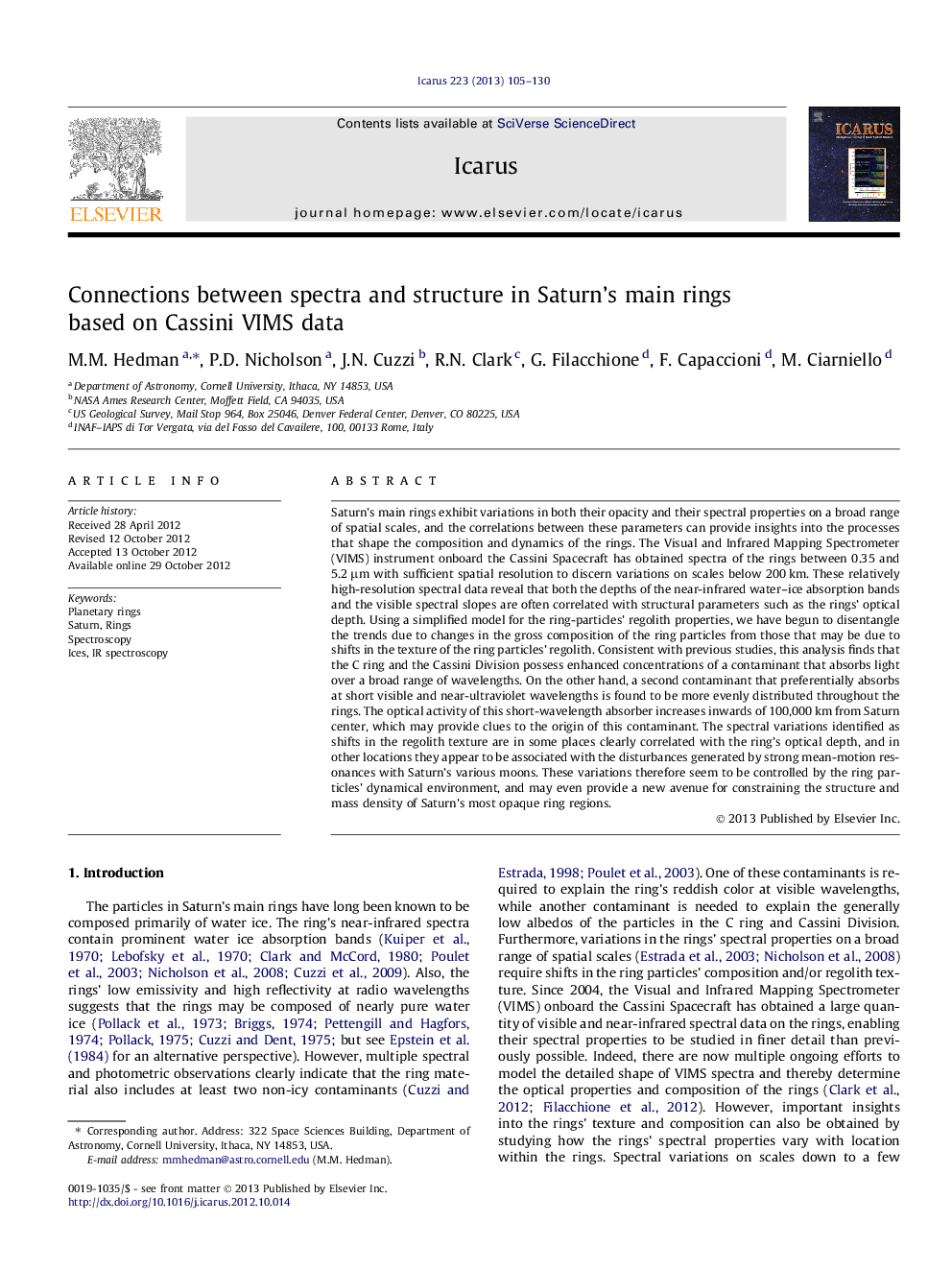| Article ID | Journal | Published Year | Pages | File Type |
|---|---|---|---|---|
| 10701588 | Icarus | 2013 | 26 Pages |
Abstract
Saturn's main rings exhibit variations in both their opacity and their spectral properties on a broad range of spatial scales, and the correlations between these parameters can provide insights into the processes that shape the composition and dynamics of the rings. The Visual and Infrared Mapping Spectrometer (VIMS) instrument onboard the Cassini Spacecraft has obtained spectra of the rings between 0.35 and 5.2 μm with sufficient spatial resolution to discern variations on scales below 200 km. These relatively high-resolution spectral data reveal that both the depths of the near-infrared water-ice absorption bands and the visible spectral slopes are often correlated with structural parameters such as the rings' optical depth. Using a simplified model for the ring-particles' regolith properties, we have begun to disentangle the trends due to changes in the gross composition of the ring particles from those that may be due to shifts in the texture of the ring particles' regolith. Consistent with previous studies, this analysis finds that the C ring and the Cassini Division possess enhanced concentrations of a contaminant that absorbs light over a broad range of wavelengths. On the other hand, a second contaminant that preferentially absorbs at short visible and near-ultraviolet wavelengths is found to be more evenly distributed throughout the rings. The optical activity of this short-wavelength absorber increases inwards of 100,000 km from Saturn center, which may provide clues to the origin of this contaminant. The spectral variations identified as shifts in the regolith texture are in some places clearly correlated with the ring's optical depth, and in other locations they appear to be associated with the disturbances generated by strong mean-motion resonances with Saturn's various moons. These variations therefore seem to be controlled by the ring particles' dynamical environment, and may even provide a new avenue for constraining the structure and mass density of Saturn's most opaque ring regions.
Related Topics
Physical Sciences and Engineering
Earth and Planetary Sciences
Space and Planetary Science
Authors
M.M. Hedman, P.D. Nicholson, J.N. Cuzzi, R.N. Clark, G. Filacchione, F. Capaccioni, M. Ciarniello,
